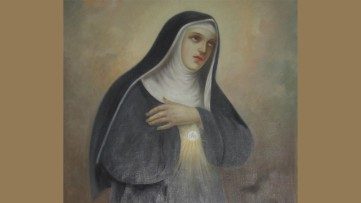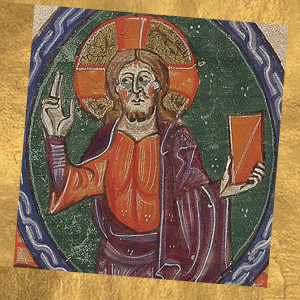St. Juliana Falconieri, Virgin, Foundress of the Mantellate

Juliana Falconieri lived in Florence during the Middle Ages. At that time, the city was plagued with internecine strife between Guelphs, who supported the Popes, and the Ghibellines, who supported the emperors. Juliana came from a noble Florentine family that was deeply involved in the affairs of the city.
The girl in the cloak
But the Falconieri’s wealth did not consist solely in gold and silver. The family was also rich in Christian faith, which had already led Alessio Falconieri, Juliana’s uncle, to give up everything and consecrate himself to God. Juliana was fascinated by her uncle’s vocation as one of the founders of the Servants of Mary (the Servites). Although she was a beautiful young woman, she rejected all offers of marriage; she preferred the habit of the Servites to the fashionable clothing of her peers. She dedicated herself to serving the poor, and in time, other young woman began to follow her lead.
Love in a city of hate
Juliana and her friends were distinguished by the dark cloaks they wore in imitation of the Servites, and from this choice of dress were known as the “Mantellate.” Eventually, they became the female branch of the Servants of Mary, the Sisters of the Third Order of Servites. Their lives were given to contemplation and charitable works. On Wednesdays and Fridays they fasted completely, while on Saturdays they contented themselves with bread and water.
The Mantellate became a common sight in Florence. They were known, too, for promoting peace in a city marked by deadly vendettas. Their sacrifices were offered for an end to the hatred that plagued the population.
St Juliana, who guided the community until her death, was able to offer additional sufferings. For many years she was afflicted with a stomach ailment that made it difficult to eat solid food. Over time, it became impossible for her to swallow even the little food necessary to sustain her life.
A Eucharistic miracle
It soon became clear that her life was drawing to a close. But because of her illness, she was unable to receive Holy Communion for the dying. When the priest came to give her last rites, Juliana asked him to spread a corporal on her chest, and place the Blessed Sacrament there. After a short time, the Sacred Host disappeared, and Juliana went to her eternal reward. As her sisters prepared her for burial, they discovered the image of the Cross, similar to the one on the host, had appeared on Juliana’s body. This was widely acclaimed as a Eucharistic miracle, and the story became part of the liturgical account of her life. Since her death, the Mantellate have included this symbol of the Cross on their religious habit.
St Juliana Falconieri was canonized in 1737 by Pope Clement XII.







